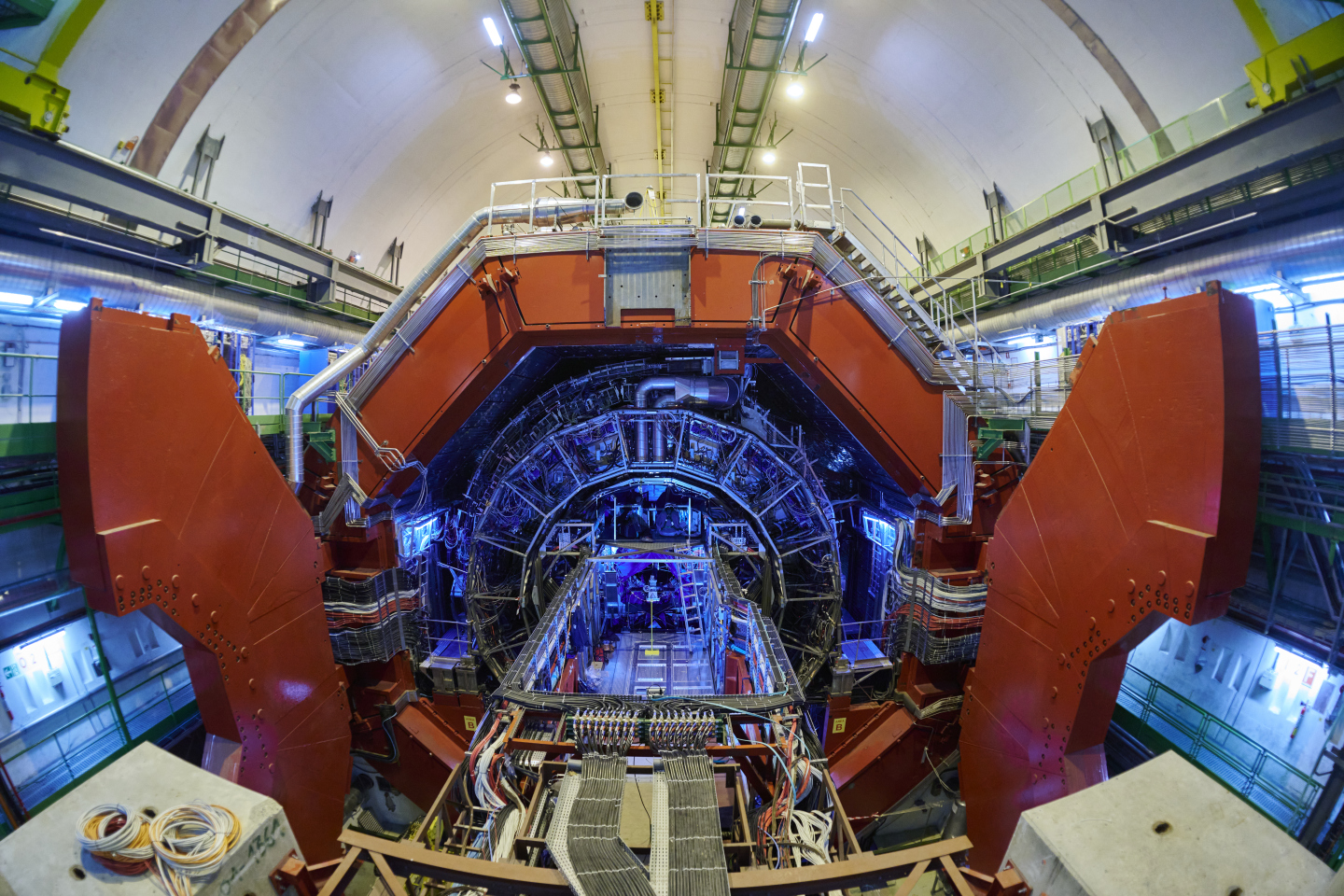For centuries, alchemists from ancient China, India, and Europe dreamed of transforming base metals like lead into precious gold. This long-standing quest, known as Chrysopoeia. They believed in a mysterious substance called the “philosopher’s stone” that could unlock this secret. While their dreams never came true, modern science has finally achieved what they could only imagine, thanks to the incredible work of scientists at CERN’s Large Hadron Collider (LHC) in Switzerland.
A Medieval Dream Realized – Through Science
This isn’t magic. It’s the realization of an ancient alchemist’s dream through modern nuclear physics. In the 20th century, we learned that heavy nuclei can transmute, either by radioactive decay or by particle bombardment in the lab. Recently, at CERN’s Large Hadron Collider (LHC), scientists ALICE (A Large Ion Collider Experiment) collaboration have observed the transmutation of lead atoms into gold.
However, this transmutation did not come from direct collisions, but through a phenomenon involving near-miss interactions between lead nuclei moving at nearly the speed of light. These near-collisions generate extremely powerful electromagnetic fields that can knock three protons out of a lead atom. Since gold has three fewer protons than lead, this results in the formation of a gold atom, at least for a very short moment (Space.com, 2024).
The Science Behind the Magic
Let’s break it down. An atom of gold has 79 protons, while lead has 82. So, turning lead into gold is essentially a matter of removing three protons. But protons are tightly bound in the nucleus by something called the strong nuclear force, one of nature’s strongest forces. To overcome this force, scientists used the LHC (the world’s largest and highest-energy particle accelerator) to speed up lead nuclei to 99.999993% the speed of light. When these nuclei barely miss each other, rather than crashing head-on, they generate a huge electromagnetic pulse (The Conversation, 2024).
This pulse triggers what’s called “electromagnetic dissociation,” where the atomic nucleus shakes and ejects neutrons and protons. If exactly three protons are removed, the lead atom becomes gold. These interactions are incredibly rare and last for just microseconds, but they are real, measurable, and profoundly significant. (CERN News, 2024).
Before you get excited about getting rich, here’s the reality check: between 2015 and 2018, scientists at CERN produced approximately 86 billion gold nuclei. Sounds like a lot? It only adds up to about 29 picograms, or 29 trillionths of a gram (Journee Mondiale, 2025). That’s so tiny it wouldn’t even be visible, let alone useful for making jewelry.
The production rate was impressive, to 89,000 gold nuclei per second during active experiments, but the atoms broke apart almost instantly after forming. They collided with the LHC’s beam pipe or other components and decayed into other particles (Space.com, 2024).
So why is this important if it doesn’t make us rich?
According to Dr. Elena Markov, a researcher on the ALICE experiment, this is about far more than gold. “It’s a beautiful demonstration of Einstein’s E = mc2 in action, showing how energy and matter can be transformed” (Journee Mondiale, 2025). The findings help scientists understand nuclear stability and reactions, and even how elements form in cosmic events like neutron star collisions.
What’s more, the advanced detection technology used, particularly the zero-degree calorimeters (ZDC) that detect subtle nuclear changes, opens new research pathways potentially beneficial for nuclear medicine, particle physics, and future clean energy sources (CERN News, 2024).
Interestingly, this isn’t the first time humans have made gold from lead. In the 1970s, Nuclear chemist and Nobel laureate Glenn Seaborg and his team at Lawrence Berkeley National Laboratory achieved lead-to-gold conversion using a powerful particle accelerator. While the result was groundbreaking at the time, the method was extremely expensive. A senator even criticized it for wasting taxpayer money.
Even earlier, in 1937, physicist and Nobel laureate Ed McMillan created the first artificial isotopes of gold using early particle accelerators known as cyclotrons. Since then, nuclear transmutation has become routine in laboratories worldwide. Today, nuclear scientists regularly create elements and isotopes previously unseen in nature, contributing significantly to our understanding of atomic structure and fundamental physics. (Discover magazine 2024)

From Myth to Measurement
The success of this experiment at CERN beautifully shows how ancient curiosities still inspire modern science. Alchemists, despite their mistaken theories and mythical approaches, were right to ask fundamental questions about matter. Today, with powerful machines and brilliant minds, scientists have not only proven that transmutation is possible but have also expanded humanity’s understanding of nature at its most fundamental level.
Scientists emphasize that the true goal of modern nuclear physics is not the production of gold but rather achieving gold-standard knowledge. The tiny amounts of gold produced in the LHC experiments symbolize something far greater: the extraordinary power of science to transform our understanding of the universe itself.
These advancements in nuclear transmutation could influence numerous scientific fields. As nuclear physics progresses, understanding these elemental transformations might inspire innovative approaches in medicine, such as targeted radiotherapy utilizing gold nanoparticles, or even in developing new materials and clean energy technologies.
Moreover, understanding nuclear processes at a deeper level helps predict and manage challenges in future particle accelerators. Insights from these experiments inform scientists about beam stability, energy losses, and potential enhancements to collider performance, guiding future technological advancements for exploring the tiny building blocks of the universe.
The CERN discovery bridges ancient alchemical dreams with modern science. While medieval alchemists tried to make gold for wealth and immortality. Today, scientists are not after wealth; they want to understand how the universe works. The tiny gold atoms created at CERN may be insignificant as treasure, but as scientific milestones, they’re invaluable.
The transformation of lead into gold at CERN is thus symbolic of a broader human quest: understanding the universe’s deepest secrets. The true wealth lies not in the tiny amounts of gold produced but in the immeasurable knowledge that emerges from pushing the boundaries of science.
Reference:
- https://www.space.com/astronomy/modern-day-alchemy-scientists-turn-lead-into-gold-at-the-large-hadron-collider
- https://theconversation.com/physicists-at-the-large-hadron-collider-turned-lead-into-gold-by-accident-256478
- https://home.cern/news/news/physics/alice-detects-conversion-lead-gold-lhc
- https://www.journee-mondiale.com/en/scientists-achieve-medieval-dream-first-successful-lead-to-gold-conversion-at-cern/
- https://www.discovermagazine.com/the-sciences/turning-lead-into-gold
Similar Articles: LSM 2019: Interview with CERN’s Dr. Joao Antunes Pequenao

Abdul Wahab is a chemistry graduate specializing in physical chemistry. His research focuses on clean energy. He is a science enthusiast and communicator who loves to explore the complex phenomena behind advanced technologies and translate them into simple, understandable language.

